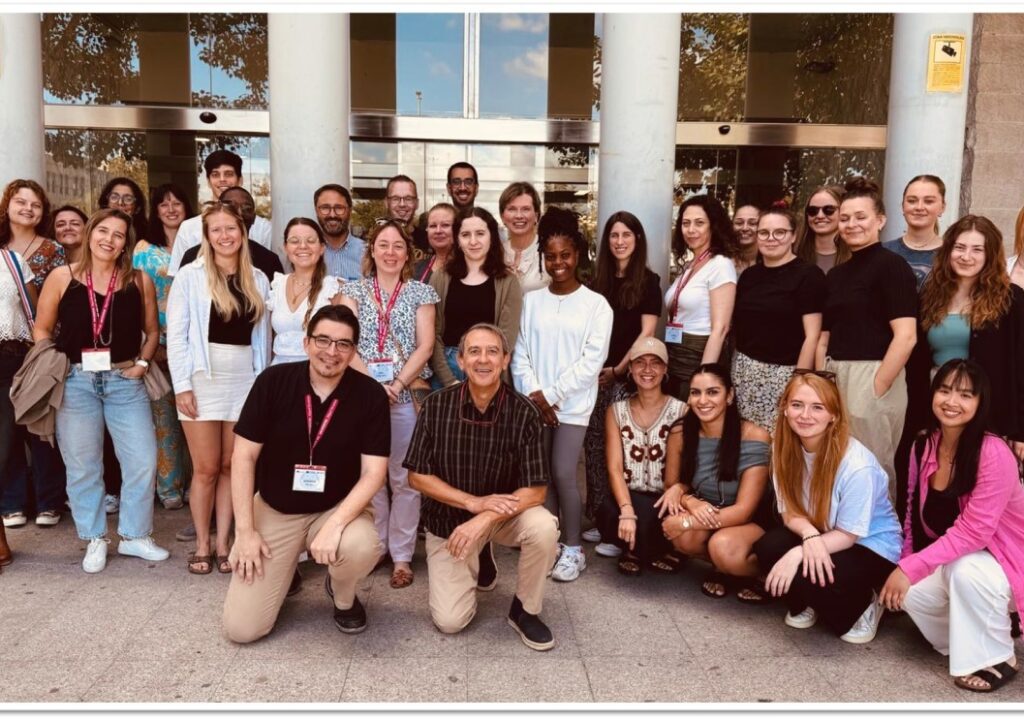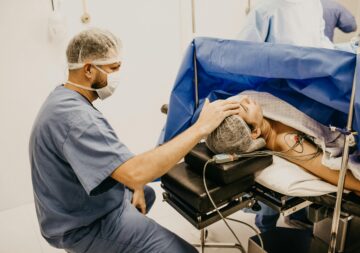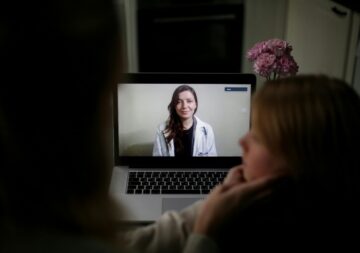
Learning about patient safety is a vital part of the health and social care students’ education. An international, multilevel Blended Intensive Program on Patient risk oversight (PROTECT) was conducted with Spain, Germany, Portugal, and Finland to learn in an innovative and new way about patient safety. Intensive week of the program was held in Miguel Hernández University in Alicante Spain at the end of September 2024. A total of 26 students from 4 different countries participated in the multidisciplinary intensive week. Five students and two teachers from LAB University of Applied Sciences participated and represented Finnish health and social care education. During the intensive week in Alicante, crucial topics were highlighted and elaborated on patient safety and risk assessment in healthcare facilities. Methods for shared learning were utilized, and learning was evaluated at the end of the week.
Authors: Monalisa Maziwisa, Ariana Vlas, Anu Venesoja & Susanna Tella
What is PROTECT course
The PROTECT course consisted of 2 parts: the virtual part, which was carried out independently in the summer of 2024, and the face-to-face mobility, which took place in Alicante at the San Juan Campus of the Miguel Hernández University of Elche. The learning goals of this project was that the student will be able to apply the knowledge acquired in patient safety that will aid in predicting potential safety concerns, will promote a culture of support and will ensure a safe workplace for the workers and their clients. In the virtual part of the course, we were able to learn about the basics of quality management. We were introduced to patient safety and how the risks involving patient safety are resolved and managed legally in different countries. One of the aims of this project was to learn the principles of risk management according to ISO31000 and to learn how to use new tools that will help in the risk management process. The virtual phase of the project gave us an idea of ‘Just Culture’ phenomena in healthcare and how human factors need to be taken into account when managing the effects of an adverse event. We discovered how healthcare workers can become victims of adverse events and how it can impact the quality of care provided. The online course was helpful in building our knowledge about healthcare management and preparing us for the in-person part of the program.
At the first day of the intensive week, the staff at Miguel Hernandez University welcomed all the participants warmly, and the information of the project schedule was distributed amongst students. The in-person mobility gave students the opportunity to engage in different workshops and group activities that allowed us to apply the knowledge acquired in the online part of the program. The workshops allowed us to explore the tool of scenario analysis in risk management and identify ways we can utilize it in our work. Having participants from different backgrounds helped bring perspectives on how the Global Patient Safety Action Plan is applied locally in the healthcare sector. We were able to analyze and compare the working conditions in different countries and examine how relevant authorities manage to protect patients and workers from medical errors and distinguish it from actual harm. The lectures provided in-depth awareness of near misses and how to effectively identify the root causes using RCA and Ishikawa tools of analysis. It gave us the opportunity to discuss and create new solutions to prevent near-miss situations in healthcare. To build a strong culture of safety, it is important that the leaders of the organization are just as committed to actively promoting safety practices and will ensure that their workers are protected from occupational burnout and supported when needed. We learned about the pillars of safety-oriented culture which are: clear communication, inclusive decision-making, flexibility and promoting anonymous reporting. Incidents should be used as learning opportunities, addressing systemic issues instead of blaming individuals, this will drive continuous improvement and accountability (Hughes 2008).
PROTECT course learning outcomes
Risk assessment and management techniques and tools were explained based on the availability of adverse events and harm that can be caused to patients and clients due to work mistakes. Patient safety is the absence of preventable harm to a patient and reduction of risk of unnecessary harm associated with health care to an acceptable minimum (WHO 2023). Common sources of harm were identified and the potential risks involved and adverse events for both the patient and the healthcare providers. The learning experience was adequate to share ideas and theories based on group work and teamwork discussions between participants from each country that were present allowing diversity and multiculturism. Therefore, the healthcare systems risk assessment was based on different healthcare systems allowing flexibility with decision making. The “Global patient safety action plan 2021-2030” in May 2024 was discussed and its objectives and strategic policies. The action plan accurately pinpoints the need for patient safety because unsafe practices can prolong patients’ stay in the hospital, it can cause mistrust in healthcare providers, and it ends up in financial loss globally. It highlights how poor design of the healthcare system could provoke human error, decline the quality of care and make working conditions unsafe. The plan promotes changes that require a collective effort, from policymakers to healthcare workers, to build a highly reliable healthcare system that protects and supports patients and their families. (WHO 2021.)
London Protocol was one of the important learning outcomes from the project, as it outlined a process of incident investigation and analysis for use by clinicians, risk and patient safety managers, researchers and others wishing to reflect and learn from clinical incidents followed by 7 steps. The learning procedure included the use of case studies to evaluate and assess. (Strametz et. al. 2015.) The London protocol is a method that allows health professionals to learn from previous mistakes for the future to reduce patient harm caused by clinical mistakes and reduce the adverse events caused by patient incidents/ harm. In most high-risk industries learning from accidents and near misses is a long-established practice and a cornerstone of safety analysis and improvement. (Vincent & Adams 2006.) Limiting the adverse events caused by the incidents such as expensive surgeries, disability and death. Second Victims are healthcare providers that are involved in an unpredicted adverse patient event, in a medical error or patient harm and are victimized in the sense that they are traumatized by the event, depression, anxiety and fear are common feelings shared during this experience. (Sachs & Wheaton 2023.)
Summary of the PROTECT course
PROTECT program was an incredible opportunity where students could develop new skills as future healthcare providers. The course improved knowledge of risk management, safety culture and managing patient harm. The intensive week project helped identify the need for individual accountability and to create a culture of support and advocacy for patient safety and safe working conditions. The project helped to develop multicultural skills and to realise that the design of the healthcare system needs to change at the national level to potentially reduce patient harm.
Overall, it was worth participating in the PROTECT course. It was an eye-awakening learning experience, which allowed future professionals in the working environment to have different views, decisions and perspectives outside of our specialties and have alertness of the surrounding towards our patients and work colleagues. In addition to learning and grasping new knowledge, there was a time to explore the beautiful city of Alicante organized by the University staff for all participants. Therefore, we would recommend all students to participate in international courses if possible.
References
Hughes RG. Nurses at the “Sharp End” of Patient Care. Patient Safety and Quality: An Evidence-Based Handbook for Nurses. 2008. Chapter 2. Cited 20 Jan 2025. Available at https://www.ncbi.nlm.nih.gov/books/NBK2672/
Sachs CJ, Wheaton N. Second Victim Syndrome. [Updated 2023 Jun 20]. In StatPearls [Internet]. Treasure Island (FL): StatPearls Publishing; Cited 20 Jan 2025. Available at https://www.ncbi.nlm.nih.gov/books/NBK572094/
Strametz, R., Müller, H., & Brühwiler, B., 2016. Systematische Analyse kritischer Ereignisse–Das London Protokoll. [Systematic analysis of critical incidents – the London Protocol] Risikomanagement in der prähospitalen Notfallmedizin: Werkzeuge, Maßnahmen, Methoden, 105-113.
Taylor-Adams, S., & Vincent, C., 2004. Systems analysis of clinical incidents: the London protocol. Clinical Risk, 10(6), 211-220.
WHO. 2021. Global Patient Safety Action Plan 2021-2030: Towards eliminating avoidable
harm in health care. Cited 20 Jan 2025. Available at https://iris.who.int/bitstream/handle/10665/343477/9789240032705-eng.pdf?sequence=1
WHO. 2023. Patient Safety. Cited 20 Jan 2025. Available at https://www.who.int/news-room/fact-sheets/detail/patient-safety
WHO. 2024. World Health Assembly (WHA). Cited 20 Jan 2025. Available at https://www.who.int/about/governance/world-health-assembly
Authors
Monalisa Maziwisa and Ariana Vlas are paramedic nursing students at LAB University of Applied Sciences.
Anu Venesoja works as a Principal Lecturer in Prehospital care at Health and Wellbeing unit in LAB University of Applied Sciences. She was one of the PROTECT course teachers.
Susanna Tella is as a Chief specialist at Health and Wellbeing Innovations, LAB University of Applied Sciences. She was one of the PROTECT course teachers.
Illustration: BIP: Patient Risk Oversight project participants 2024 Miguel Hernandez University Alicante Spain (Image: University of Miguel Hernández)
Reference to this article
Maziwisa, M., Vlas, A., Venesoja, A. & Tella, S. 2025. Blended Intensive Program (BIP) on Patient Risk Oversight learning experience in Alicante. LAB Pro. Cited and the date of citation. Available at https://www.labopen.fi/en/lab-pro/blended-intensive-program-bip-on-patient-risk-oversight-learning-experience-in-alicante/






